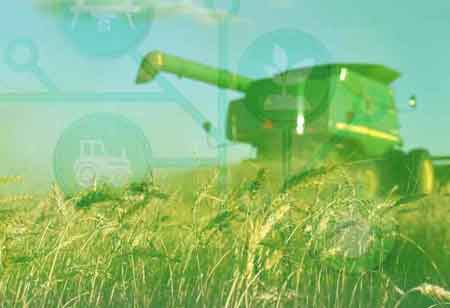Thank you for Subscribing to Agri Business Review Weekly Brief
Smart Tools for Modern Agricultural Practices
Technology is revolutionizing agronomy by offering tools that enhance crop yields, conserve resources, and make farming more efficient and sustainable.

By
Agri Business Review | Wednesday, March 19, 2025
Stay ahead of the industry with exclusive feature stories on the top companies, expert insights and the latest news delivered straight to your inbox. Subscribe today.
Fremont, CA: Agronomy has always been fundamental to agriculture. As global food demand increases, agronomy increasingly leverages advanced technologies to boost crop yields, improve soil health, and promote sustainable farming practices. Farmers can utilize these technologies to make more precise decisions tailored to specific areas of their fields instead of treating them all uniformly. Drones and remote sensing tools now enable the rapid monitoring of vast regions, offering real-time insights that empower farmers to make data-driven choices, enhancing crop yields and minimizing waste.
Healthy soil is fundamental to sustainable agriculture, and Internet of Things (IoT) technology offers farmers a way to keep it that way. IoT-enabled sensors, placed directly in the soil, can measure various parameters like pH, moisture content, temperature, and nutrient levels. These sensors send real-time data to farmers' mobile devices or computers, enabling them to respond promptly to changes in soil conditions. Soil moisture sensors allow for more efficient irrigation by notifying farmers exactly when and where water is needed, reducing water waste, and preventing over-irrigation, which can damage crops and soil.
Through techniques like CRISPR gene editing, scientists can introduce desirable traits into crops, such as drought tolerance, increased nutrient content, and faster growth cycles. These genetically modified (GM) crops can thrive in challenging environments, helping farmers achieve consistent yields despite unpredictable climate conditions. Bioengineering advances have led to crops that require less fertilizer or pesticides, reducing the chemical load on the environment. Biotechnology continues to open new avenues for crop improvement, supporting agronomists' efforts to meet global food demands sustainably.
AI-driven platforms analyze massive amounts of data from various sources, such as weather forecasts, soil health reports, and historical crop yield records. Using this data, AI models can predict crop performance, identify disease risks, and even recommend the optimal planting and harvesting times for maximum yield. AI algorithms can assist farmers in making smarter decisions about crop rotation, pest control, and resource allocation. Predictive analytics allow farmers to anticipate issues before they arise, while prescriptive analytics offer actionable steps for addressing them. This integration of AI in agronomy helps minimize risks and maximize efficiency, making agriculture more resilient and productive.
Mobile applications and digital platforms have democratized access to agronomic knowledge for small-scale farmers in remote areas. Farmers can access educational resources, weather forecasts, market prices, and expert advice through mobile apps, which help them make better decisions in the field. Agronomy will evolve, helping to ensure food security and environmental sustainability for future generations.





